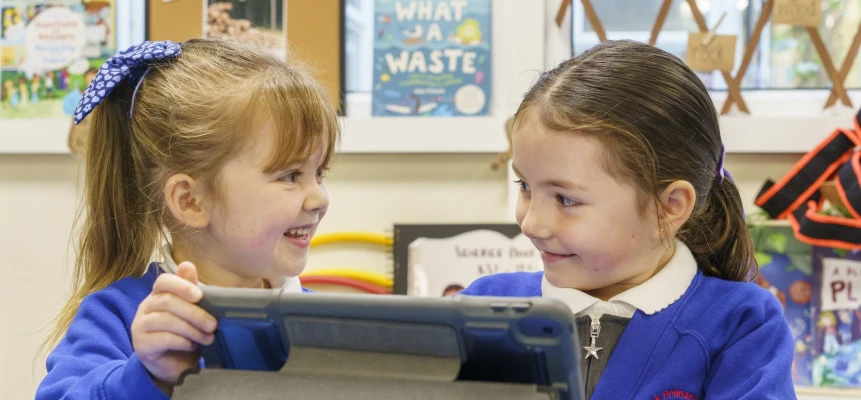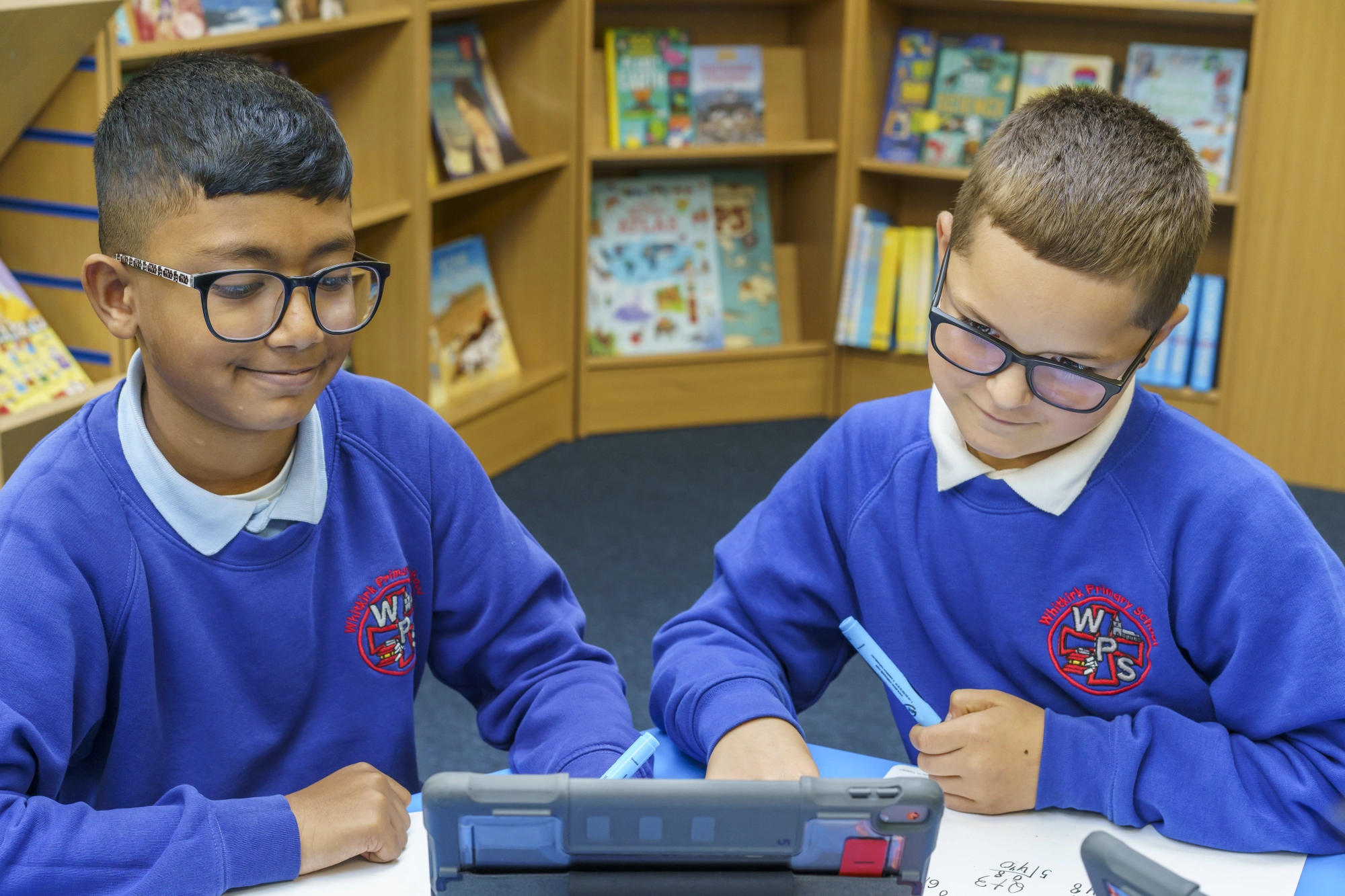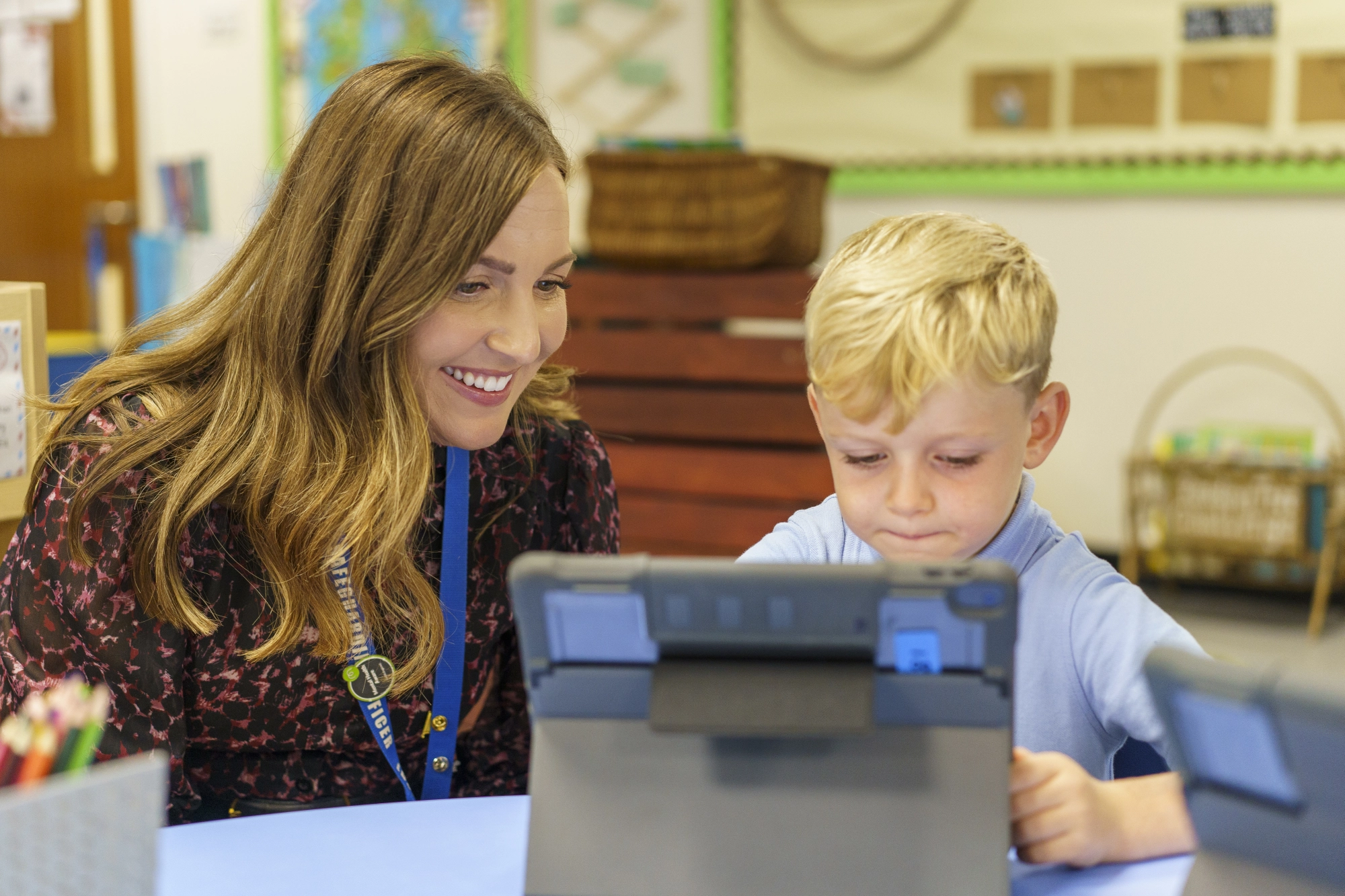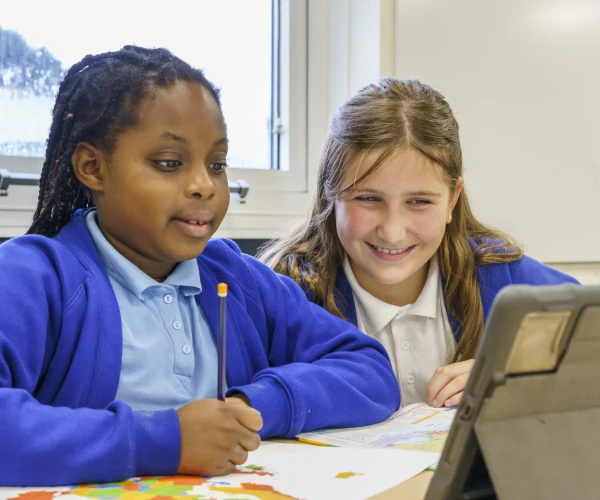Whitkirk Primary School: A Strategic Use of Technology to Raise Attainment
Posted 24th April 2025
A case study by Gemma Quarmby, Headteacher at Whitkirk Primary School.
School Context
When I took on the role of Headteacher at Whitkirk Primary School, I inherited a school facing significant financial challenges. A cumulative budget deficit, a staffing model that was no longer sustainable, and declining pupil numbers in two year groups (with only 45 children in each instead of the usual 60) placed intense pressure on our resources. At the time, every class had a full-time teaching assistant, in addition to a number of special needs assistants deployed across the school. Benchmarking consistently highlighted our staffing levels as high compared to other primary schools within our Trust.
Faced with this stark reality, I made the strategic decision not to replace teaching assistants as they left through natural attrition. Instead, we re-evaluated our approach to intervention and pupil support, placing a greater emphasis on evidence-based strategies, quality first teaching, and the purposeful integration of technology.
A Bold Turning Point
Informed by guidance from the Education Endowment Foundation (EEF), I focused on the proven impact of quality first teaching and the effective use of technology to support learning. At the time, we were significantly under-resourced in terms of technology - in 2023, our entire school shared just 30 iPads. Recognising the potential of digital learning platforms, we invested in a class set of 30 additional iPads, along with 15 further devices dedicated specifically to intervention work in UKS2.
After the disappointing KS2 results in summer 2023, we appointed a new UKS2 Phase Leader. Following a Primary Leaders meeting where Century Tech was introduced, I met with the Phase Leader, and together we agreed to implement the platform as our new method for delivering interventions. Over the years, we had trialled various approaches to intervention delivery, across school, within phases, at different times of day, but none had really delivered the results we hoped for.
The Phase Leader took full ownership of the initiative (I can’t take credit for that!), receiving training from Century Tech, leading in-house CPD for staff, updating the Home Learning Policy, and introducing motivational reward systems to boost pupil engagement.
It was all exciting, and everyone in leadership was on boarduntil they realised the necessary trade-off. UKS2 had three classes, and the previous year, each class had been supported by a full-time teaching assistant. To make the new model work, we had to reduce this support to just one teaching assistant across the phase, with a small amount of one-to-one provision for funded Year 6 pupils.
Having a teaching assistant in every classroom had been the norm at Whitkirk, so this was definitely a shift in how we worked. But they agreed it was just a different way of working and they were willing to give it a try.
Our digital trial formally began in September 2023, when we introduced Century Tech as an intervention tool with our Year 5 and Year 6 cohorts. Year 5 consisted of 43 pupils, none of whom had significant additional needs that qualified for FFI funding. Despite this, it was the cohort with the lowest attainment and attendance in the school.

Previously, both the Deputy Headteacher and Assistant Headteacher held non-teaching leadership roles. However, in response to the need to raise standards in UKS2 and to support the aims of this project, they took on classroom teaching responsibilities on a job-share basis, providing a model of high-quality, evidence-informed practice within the phase alongside the UKS2 Phase Leader.
We monitored the implementation closely, and across UKS2, we saw:
-
Century Tech being used to diagnose gaps, deliver pre-teaching and post-teaching, and support pupils in real time.
-
Tailored digital learning replacing traditional interventions, reducing dependency on teaching assistants. The benefit here is that we can run multiple interventions simultaneously on different topics—saving time and targeting specific needs more effectively.
-
A single teaching assistant deployed across UKS2, rather than within individual classes.
-
1:1 support for SEND pupils retained, based on individual need.
-
Increased parental involvement from a cohort that had previously been difficult to engage.
A Transformational Impact
By summer 2024, our KS2 results were in line with, and in some cases above, national averages for the first time in over a decade. This marked a significant milestone and validated our strategic shift.
Our original Year 5 pilot cohort is now in Year 6. Despite having no class-based teaching assistant, they are currently on track to exceed national expectations, with progress from their 2023 starting points showing clear, sustained improvement:
-
KS2 Results 2024: EXS+ in Reading, Writing and Maths – 63%
-
KS2 Results 2025 (predicted): EXS+ in RWM – 65% (up from 42% at the start of the project)
-
Attendance Improvement: The current Year 6 cohort has gone from having the lowest attendance in the school to the highest, now at 95.96%
Building on Success
Following the success of Century Tech, we extended our digital learning approach by introducing Reading Plus and invested in an additional 30 iPads for Year 4 to support the Multiplication Tables Check.
The cost of 30 iPads and a charging trolley comes in at around £8,000 per year, a fraction of the cost of a full-time teaching assistant. While support staff remain a vital part of our school, this cost-effective, evidence-informed model has allowed us to:
-
Reduce our overall teaching assistant numbers by four since 2023. With our new nursery opening in September 2025, two more TAs will be redeployed, resulting in a total reduction of six TAs from Reception to Year 6
-
Focus TA deployment where it’s needed most, in Reception, Key Stage 1, and for pupils with additional needs
-
Move away from a culture where TA presence in class is expected, to one where it’s based on individual pupil need
This journey has required difficult decisions, cultural shifts, and a shared commitment to doing things differently. By embedding evidence-informed practices and embracing digital innovation, we've not only improved outcomes, but reshaped how support is understood and deployed across our school.














